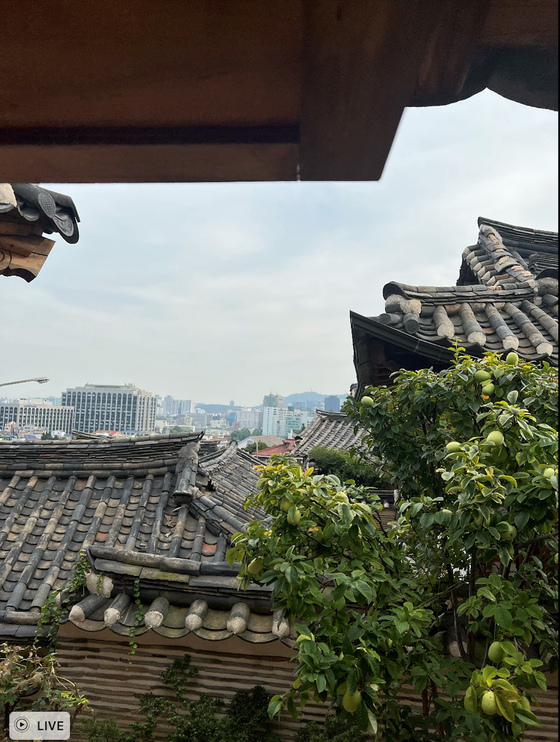A Delicate Mix of Tradition and Technology, Korea [Photo Essay Contest]

The Korea JoongAng Daily hosted its first photo essay contest for elementary, middle and high school students on the theme: “Promote the beauty of Korea to foreign countries." The contest ran from October to November. Photos containing scenes of traditional culture, family love, places to see and tasty treats in Korea were submitted for the contest.
Jungwook Hong from Chadwick International won the gold prize in the middle school category for this photo essay.
In Korea, the world-renowned 123-story Lotte Tower stands proudly as the fifth highest skyscraper in the world, attracting millions of tourists every year. However, there is a more profound reason why Korea attracts so many tourists from around the world. The rich cultural heritage consisting of five thousand years of tradition is what really attracts travel enthusiasts.
The distinctive black roofs, known as “Kiwa,” symbolize traditional Korean architecture. They consist of two pieces, the ‘Sutkiwa’ and the ‘Amkiwa’, which are fitted seamlessly to form a stable rooftop that would endure the rain in the ruthless monsoon season. The horizontal ‘Yongmaru’ is placed on top of the roof in order to keep the tiles together and strengthen the roof. Beyond its aesthetic appeal, the angle of the roof is what keeps Korean traditional houses, or “Hanoks,” warm in winter and cool in summer through the meticulous manipulation of sunlight. Can you not feel the echoes of ancestral wisdom embedded in these architectural nuances?
Above, Hyundai’s twin towers dominate the skyline, symbolizing Korea’s rapid economic evolution in the 1980s. Hyundai played a pivotal role in modernization, shaping the urban landscape with enduring structures. These include apartment complexes, department stores, and office buildings. The name of the Hyundai corporation, in Korean, means the present, something modern. The name remains true.
However, at times, the skyscraper may overshadow the Hanok. There were many claims to change the Hanok villages into more modernized apartment complexes in attempt to solve the extreme housing problems in Korea. This, according to them, would put ‘dead’ lands that would take up space in the middle of the city into productive use. However, I believe that it would be wrong to deduct the area of the Hanok villages. Hanok villages are more than just undeveloped lands with outdated houses that can potentially accommodate more people. They are part of our identity, where we originate from. Reducing Hanok areas denies future generations the opportunity to appreciate ancestral beauty and history.
To sum up, Korea is a beautiful place where both modern buildings and traditional ones breathe together, and omitting one will lead to an imbalance. Both parts of Korea, the modern and the traditional, must work together to make Korea more beautiful.
By Jungwook Hong, Chadwick International










with the Korea JoongAng Daily
To write comments, please log in to one of the accounts.
Standards Board Policy (0/250자)